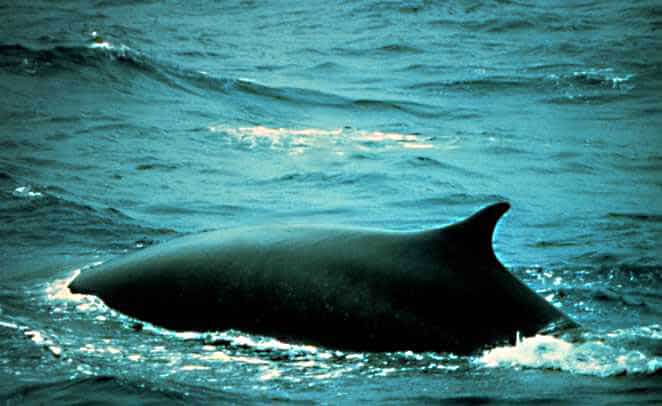Looking for Top 5 Places to See Fin Whales?
The fin whale/ finback whale is the second-largest animal ever to live! Reaching lengths of at least 85 feet (26 m) and weights of 80 tons, this species is second only to its close relative, the blue whale.
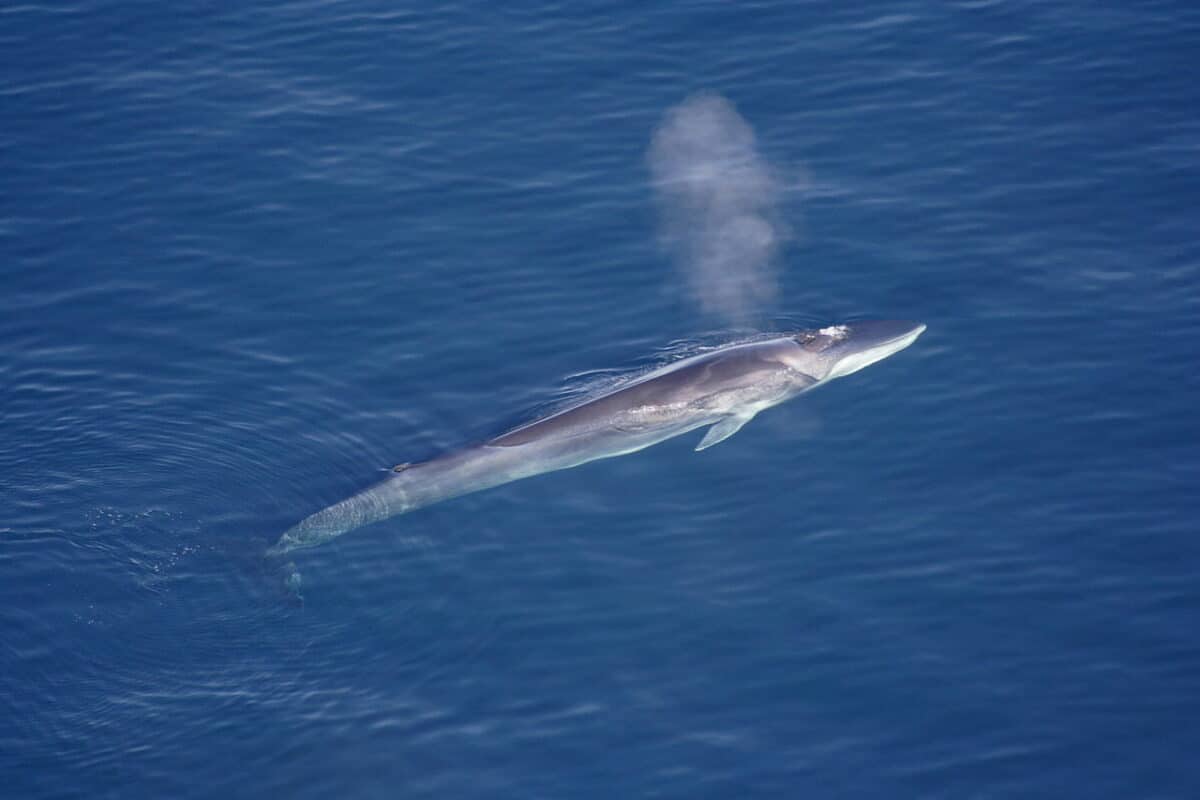
Their incredible size is only possible because of their aquatic lifestyles and the buoyancy provided by seawater.
Following the blue whale, the fin whale ranks as the world’s second-largest mammal. They are recognized by a distinctive ridge running along their back behind the dorsal fin, earning them the moniker “razorback.” Notably, fin whales exhibit an uncommon characteristic: their lower right jaw is bright white, while the lower left jaw is black.

Key Points
| Key Points | Details |
|---|---|
| Description of Fin Whales | – Second-largest animal ever to live |
| – Length: At least 85 feet (26 m) | |
| – Weight: 80 tons | |
| – Distinct ridge along the back behind the dorsal fin | |
| – Unique jaw coloration: Lower right jaw is white, lower left jaw is black | |
| Top 5 Places to View Fin Whales | 1. Canada (Quebec & Nova Scotia) |
| 2. North Pacific Sea: California (Oregon and Washington) | |
| 3. The Azores | |
| 4. Mediterranean Sea | |
| 5. North Atlantic Sea: Greenland | |
| Fun Facts about Fin Whales | – Second largest whale species |
| – Length: Up to 26 m, Weight: Up to 72.3 metric tons | |
| – Lifespan: 80 to 90 years | |
| – Accordion-like throats for feeding | |
| – Prominent, hooked dorsal fins | |
| – Fastest of all great whales, swimming up to 23 miles per hour (23 km/h) | |
| Characteristics of Fin Whales | – Socialization: Solo, pairs, or pods of up to 6 individuals |
| – Vocalizations: Lowest-frequency sounds made by any animal | |
| – Distribution: Found worldwide in tropical to polar latitudes | |
| – Habitat: Open ocean (pelagic); migrate between feeding and breeding grounds | |
| Life Span and Breeding | – Physical maturity is typically achieved between the ages of 25 and 30 years. |
| – Average lifespan: Around 90 years, with some individuals living up to 135-140 years | |
| – Mating occurs in temperate, low-latitude seas during winter | |
| – Gestation period: 11 to 12 months | |
| Diving or Swimming with Fin Whales | – Fin whales are filter feeders and harmless to humans |
| – Close encounters not advised due to their size | |
| Conservation Status | – Endangered status due to historical hunting and environmental threats |
| – Threats: Habitat loss, pollution, climate change | |
| – Collisions with ships a major cause of mortality | |
| Small Changes You Can Make | – Rethinking, reducing, reusing plastics |
| – Protesting commercial whaling | |
| – Creating awareness about overfishing and reducing fish consumption | |
| – Practicing eco-tourism and supporting marine protection | |
| – Donating to conservation organizations | |
| Summary and Call to Action | – Encourages readers to support the conservation and preservation of fin whales |
| – Provides links to organizations and resources for further information and involvement | |
| Frequently Asked Questions (FAQs) | – A section addressing common questions and providing additional information about fin whales |
The Top 5 places to view Fin Whales
1. Canada ( Quebec & Nova Scotia)
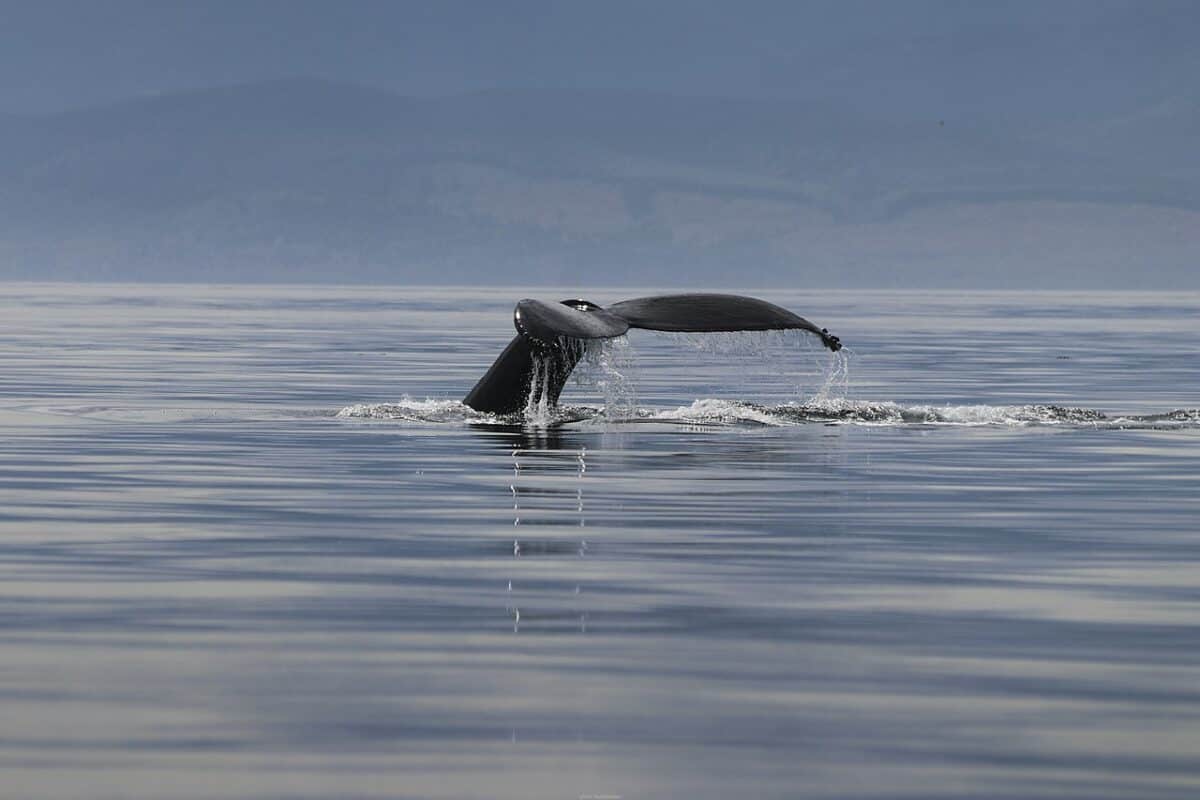
The east coast of Canada is characterized by the mighty Gulf of St. Lawrence, which stretches from Quebec to New Brunswick and Newfoundland to Labrador.
This region is rich with fish and one of the best places to watch whales in summer: Minke whales, humpbacks and finbacks often get close to the coast. Most of all, you have good chances of meeting blue whales here in summer and belugas are here even all year long.
In Nova Scotia and New Brunswick, whales are best watched from Halifax, in the Bay of Fundy and from Cape Breton. In spring, finbacks and minke whales are the first to show up in these waters, followed by dolphins and humpbacks, which arrive in June and stay until the end of August. In the Bay of Fundy, you also have chances of seeing northern right whales, of which there are only a few hundred left. Main season starts a bit later and ends a bit earlier than at Quebec.
Operators:
2. North Pacific Sea: California ( Oregon and Washington)
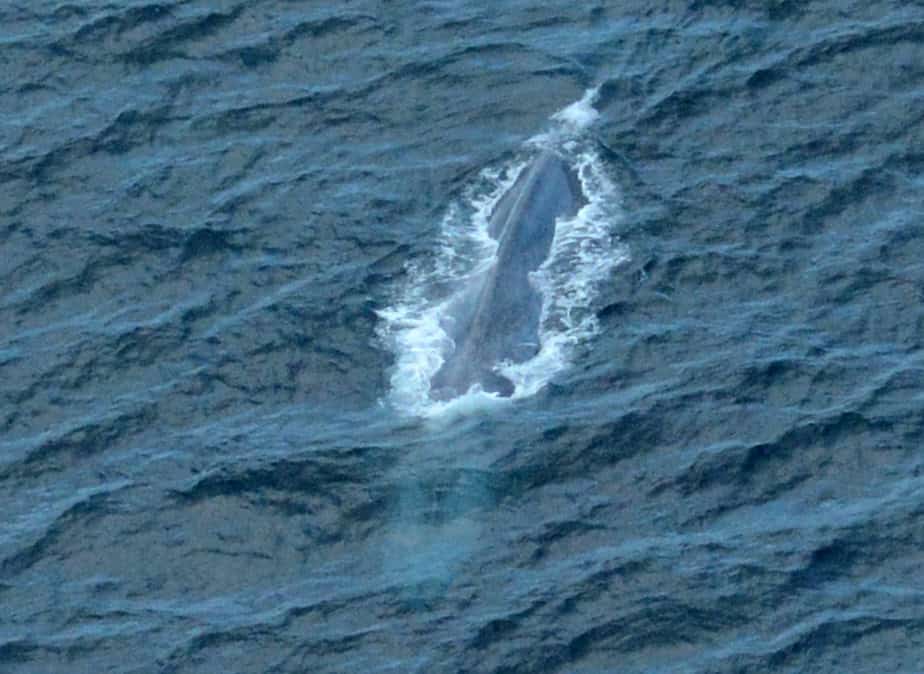
Whale watching has a long tradition in California with the first tours taking place in the 1950s. It was mostly gray whales on their way north that were watched. Humpbacks and finbacks can be seen quite often, too.
As everywhere along the coast of North America, whale watching focuses on migrating gray whales. Annually, they migrate between their feeding areas in the Arctic and their subtropical mating grounds.
Their journey takes them southward passing California from November to February and then back north from February to May (mainly April), sometimes with their calves. This explains why they tend to remain closer to the coast during these periods.
The Oregon coast to Washington state also offers beauty to its beholder in migrations of many types of whales, most prominently, the Gray whale. In Oregon, the prime times for whale watching occur twice a year: in winter (mid-December to mid-January) and spring (late February to May).
Operators:
3. The Azores
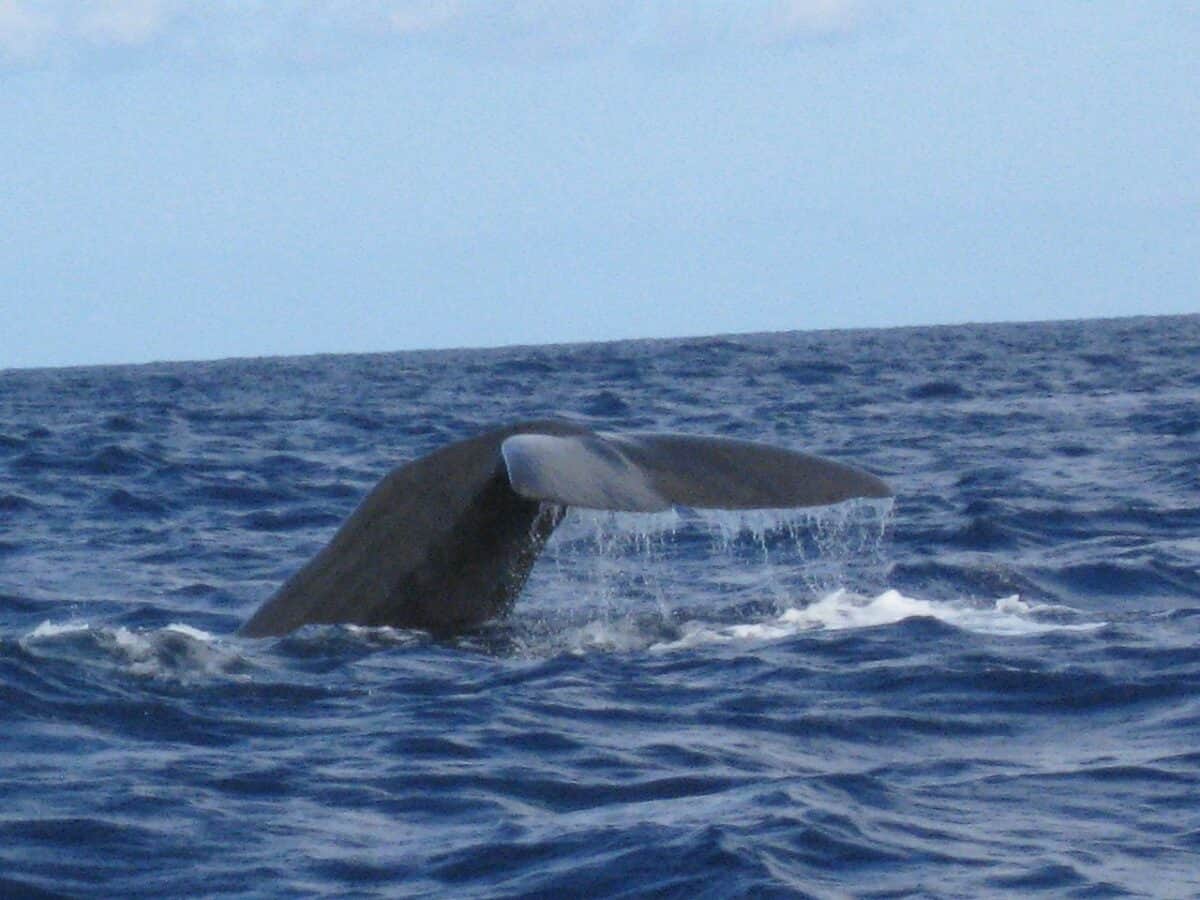
Whale watching is one of the main attractions for tourists to visit the Azores, some explicitly coming just for the whales. Most tours start at the islands of San Miguel, Faial and Pico.
You can spot about 30% of all types of whales from all over the world from here, including blue whales, finbacks and sperm whales.
Operators:
Terra Dopico Tours: Whale watching and Boat Tours on Sao Miguel Island
4. Mediterranean Sea
Satellite tracking revealed that those found in Pelagos Sanctuary migrate southward to off Tunisia, Malta, Pantelleria, and Sicily, and also possibly winter off coastal southern Italy, Sardinia,
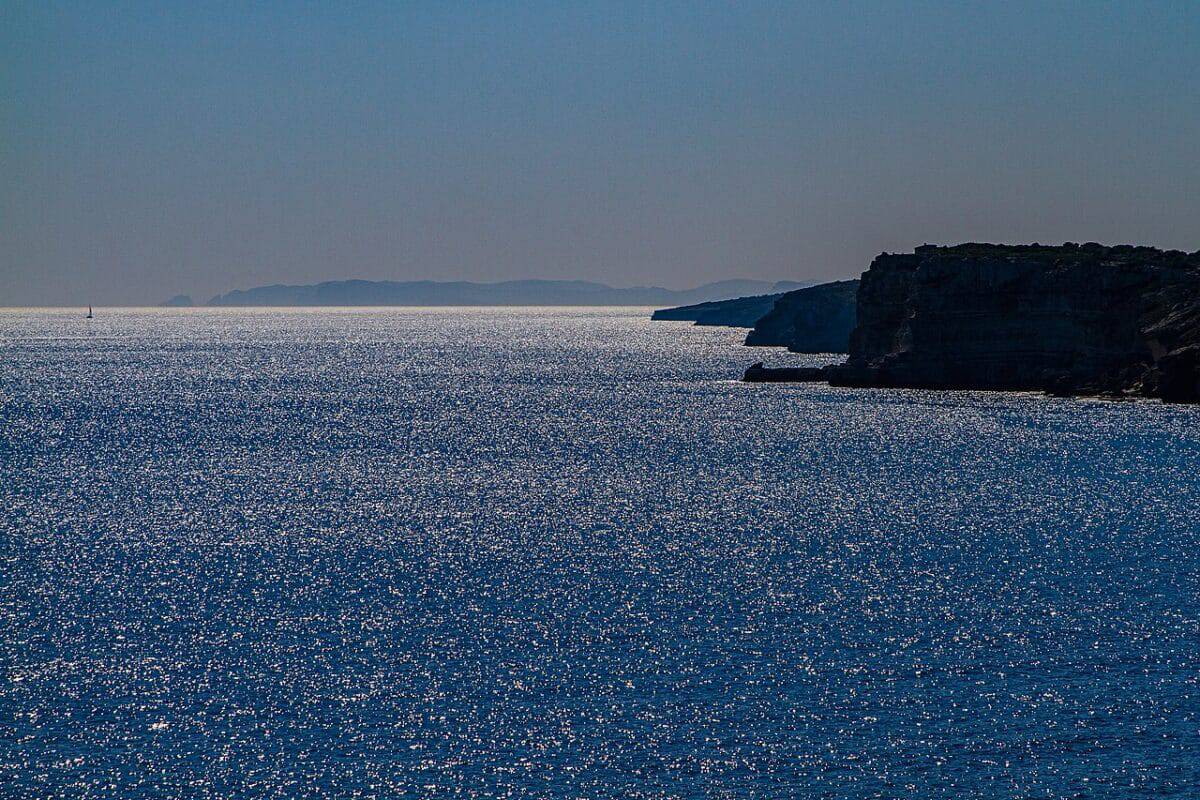
The Sanctuary is a marine area of 87,500 sq. km subject to an agreement between Italy, Monaco and France for the protection of marine mammals, which live in it.
Operators:
5. North Atlantic Sea: Greenland
Up to 15 different kinds of whales live in the waters around Greenland. Most of them are rare encounters, though. Humpbacks, finbacks and minke whales are regularly spotted between July and September. Number 5 from the list of Top 5 Places to See Fin Whales.
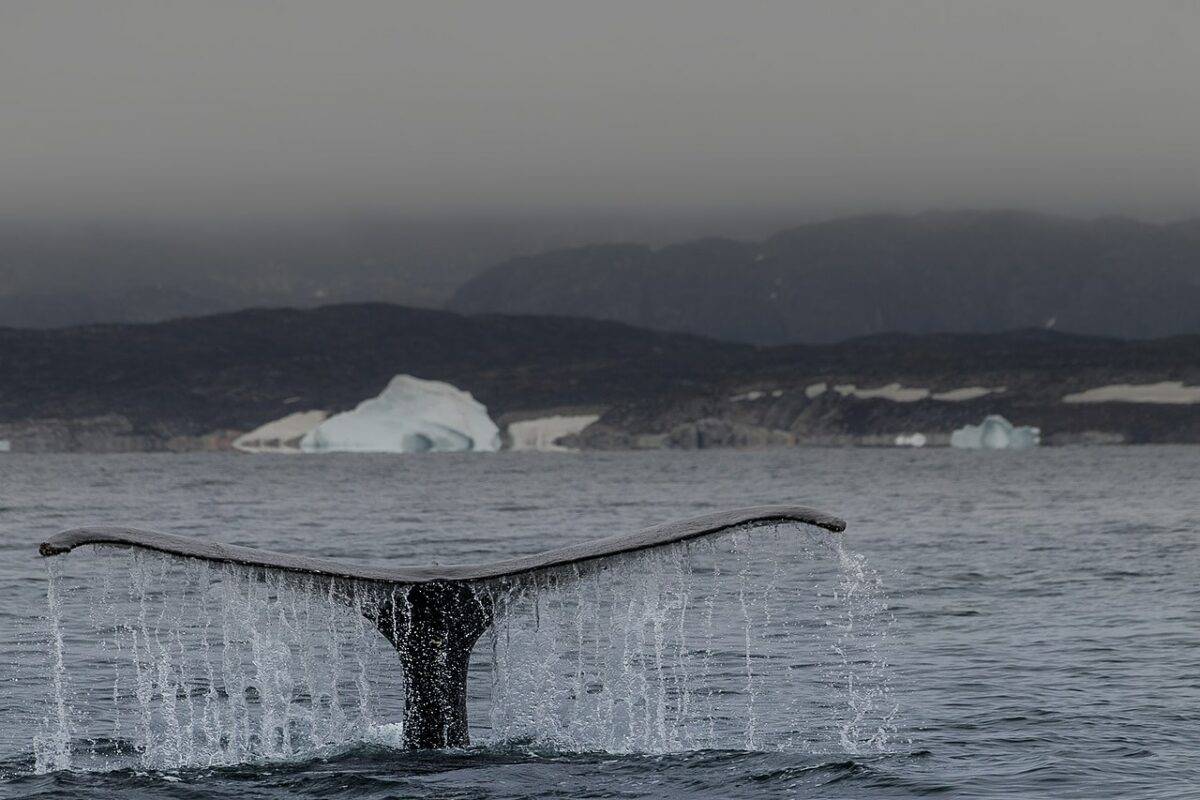
The south and west of Greenland are especially interesting for whale watching: Most tour operators in the south can be found at Nuuk and Sisimiut and at Disko Bay, Ilulissat and Aasiat in the west. Also at Uummannaaq a bit further up north.
Operators:
Fin whale fun facts
1. Fin whales rank as the second-largest whale species, reaching lengths of up to 26 meters and weighing approximately 72.3 metric tons.
2. They have an average lifespan of 80 to 90 years.
3. Fin whales possess expandable throats resembling accordions, enabling them to ingest up to 4,000 pounds (1.8 metric tons) of food daily.
4. Fin whales derive their name from the noticeable, curved dorsal fins located close to their tails.
5. Fin whales hold the distinction of being the fastest among all great whales, capable of reaching speeds of up to 23 miles per hour (23 kmph).
Characteristics
| Characteristic | Description |
|---|---|
| Size | Second-largest animal, up to 85 feet (26 m) |
| Weight | Up to 80 tons |
| Lifespan | Average of 80 to 90 years |
| Feeding | Carnivorous, gulps up to 1.8 metric tons of food per day |
| Dorsal Fin | Prominent, hooked dorsal fin near tail |
| Speed | Capable of swimming up to 23 miles per hour (23 km/h) |
| Vocalizations | Lowest-frequency sounds made by any animal |
| Conservation Status | Endangered |
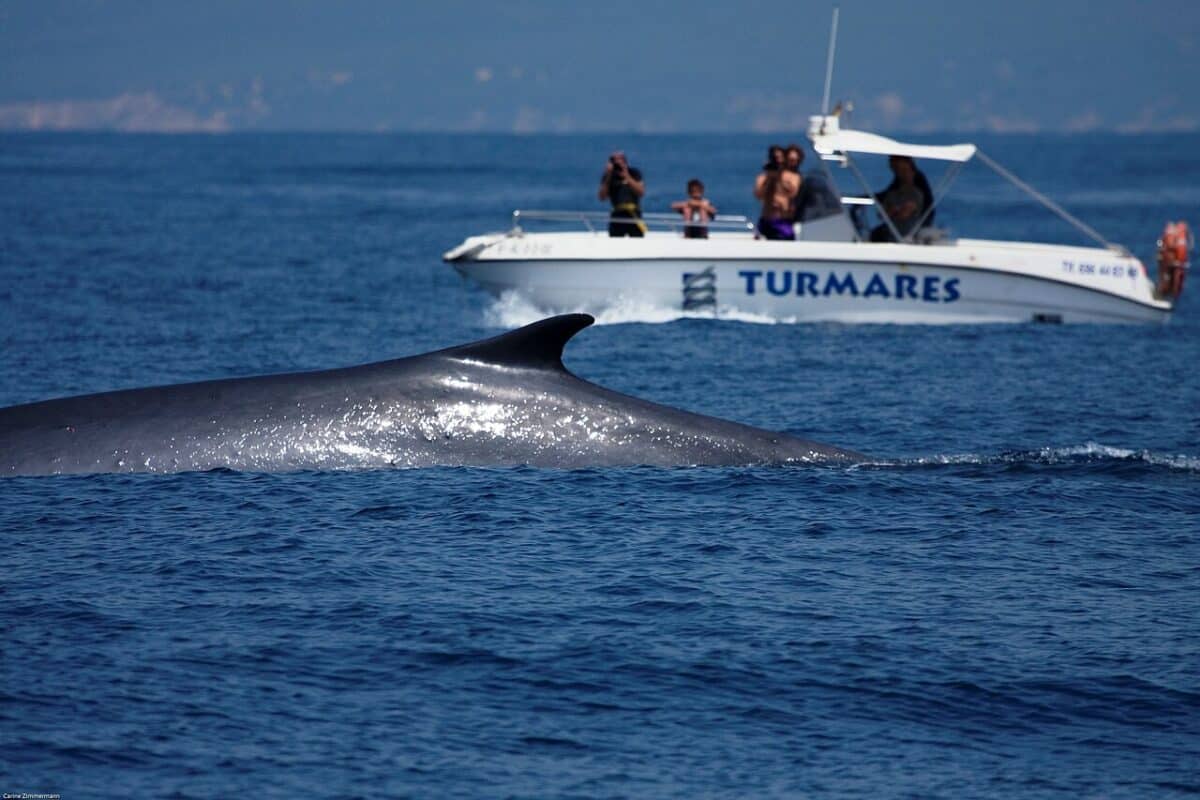
Socialization
Fin Whales’ social structure can vary depending on where in the world they are located. This may depend on scarcity of food or age ranges. Fin whales have been observed as solo animals, in pairs, and in pods of usually up to 6. However pods of much greater numbers, from 50 up to 300, have also been seen. These larger pods are usually seen during annual migrations.
The vocalizations of blue and these whales have the lowest-frequency sounds made by any animal.
Distribution
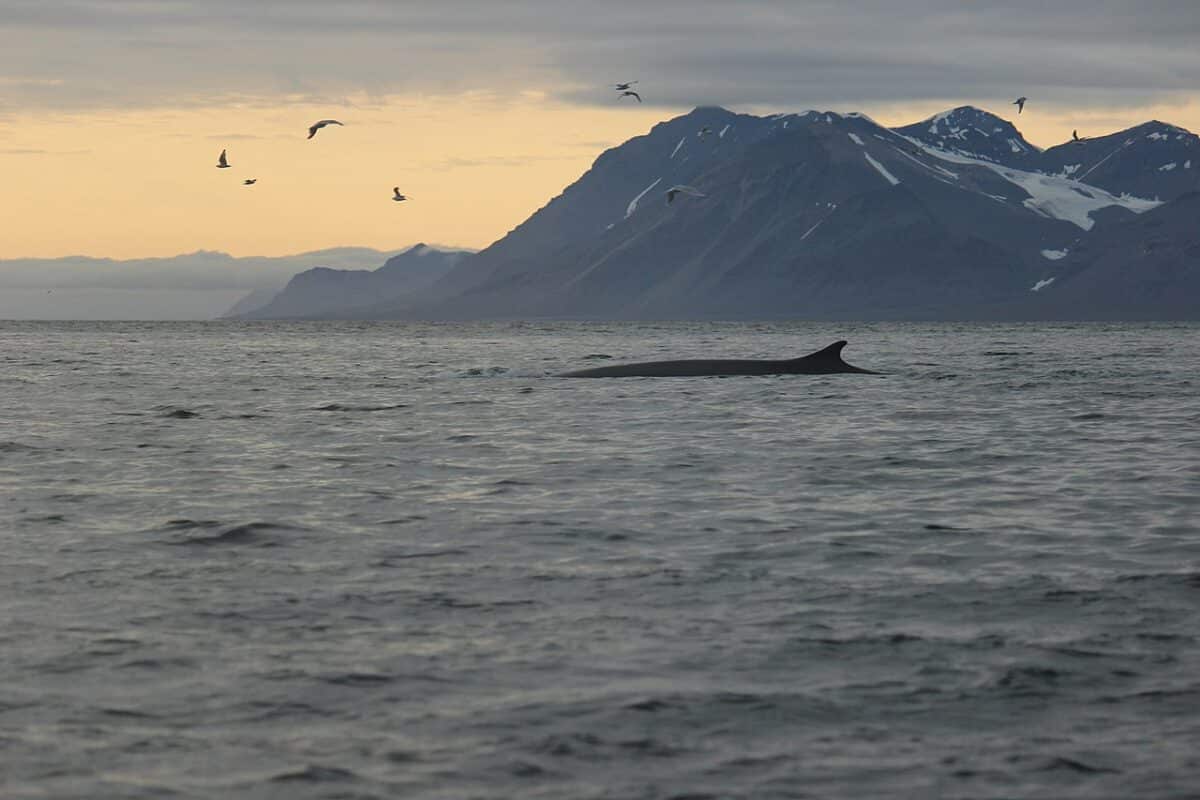
These whales may be located worldwide in tropical to polar latitudes. They are found in deep, offshore waters of all major oceans, primarily in temperate to polar latitudes. They are less common in the tropics. If lucky, one can view fin whales along most coastal stretches of the polar latitudes, dependent on the right time of year, of course.
This range may be described as a cosmopolitan distribution because it extends across all or most of the world in appropriate habitats. Such a taxon( species) is said to exhibit cosmopolitanism or cosmopolitism. A great insight from Top 5 Places to See Fin Whales.
Habitat
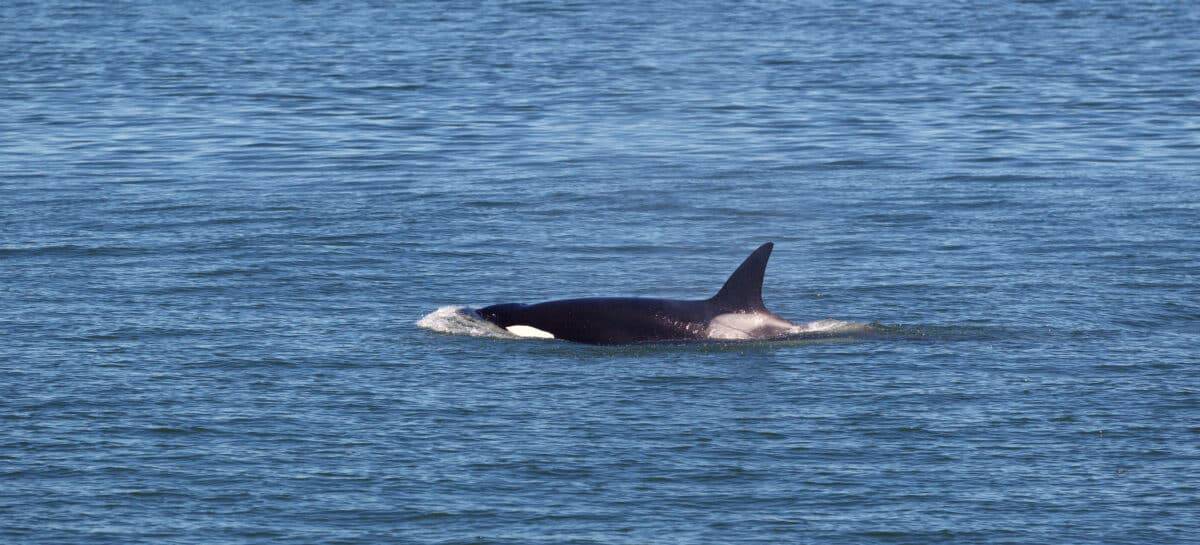
Their habitat is open ocean (pelagic); rarely coastal. Similar to other sizable whales, fin whales are believed to migrate between their feeding and breeding areas. However, inhabitants of these whales are also known to exist. Both the Gulf of California in Mexico and the Mediterranean Sea harbor resident groups of fin whales. A great place to view fin whales in the Pelagos Sanctuary mammals protected area.
Life Span and Breeding
Complete maturity is attained between 25 and 30 years. Fin whales have an average lifespan of about +/ – 90 years, while some specimens have been discovered with estimated ages of 135 to 140 years.
Breeding takes place in the winter within temperate, low-latitude seas, followed by a gestation period lasting 11 to 12 months. Females reproduce every 2 or 3 years with usually single births and the calves stay alongside their mothers for approximately one year.
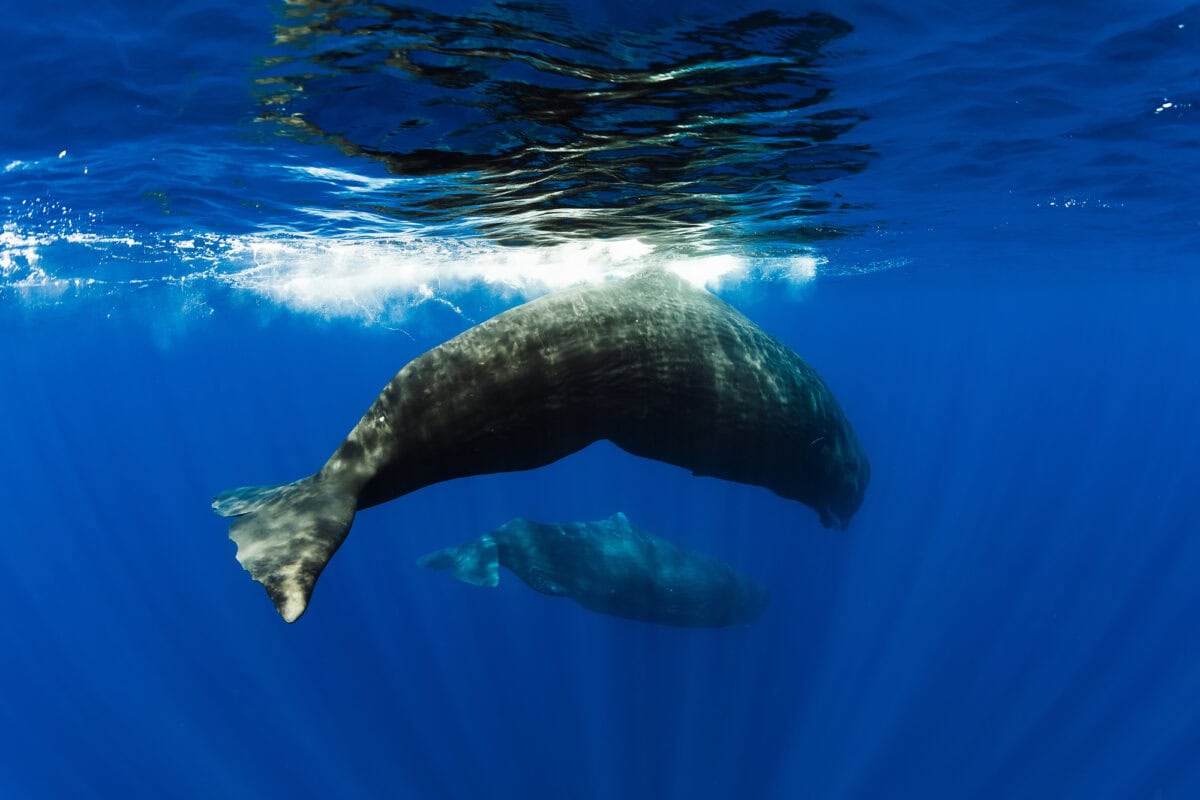
Can you dive or swim with Fin whales
Fin whales are non-predatory; they feed by filtering tiny krill or small pelagic fishes and do not pose any threat to people except for accidental collisions. However it is not advised to have close encounters due to there sheer size that could pose threat to human physique. Divers are not permitted to enter the water within 100 feet of a whale.
Speed is also the one discipline, in which the blue whale can’t trump the finback: A blue whale’s 30 km/h are no challenge for the finback. Their top speed is up to 47 km/h, which earned the gray whales this nickname: “Greyhound of the Seas”. Therefore it is difficult to experience close encounters with these whales.
Conservation

Status Endangered
Hunted by commercial whalers until the last century for oil, meat, and baleen, fin whales in the North Atlantic are listed as endangered. Some populations are faring better as a result. Like other large whales, fin whales are threatened by environmental change including habitat loss, toxic waste, pollutants and climate change.
In the last century, the significant rise in ocean noise caused by shipping and naval operations might have hindered the fin whale population’s recovery by disrupting communication between male and receptive female whales.
Collisions have also unfortunately played an impact in threatening fin whales: Ship collisions represent a significant cause of whale deaths, contributing to a considerable portion of large whale strandings in certain regions. Severe injuries primarily occur due to encounters with large, swiftly moving ships.
Small changes you can make:
- Rethinking, reducing, reusing plastics.
- Protesting commercial whaling.
- Creating awareness about overfishing, reducing the amount of fish consumed.
- Practicing eco tourism, doing your research before a tour.
- Donating to marine protection.
Donate
- Conservation of migratory species of wild animals (CMS)
- Ocean Conservancy
- Oceana
- WWF Whales
- Whale and Dolphin Conservation
Summary on Top 5 Places to See Fin Whales
Have you noted down the top five locations in which to view fin whales; the second largest marine mammal in the world! We hope that this blog will serve as an inspiration to look out for these incredible animals that have stood the test of time, but now need our help to maintain their ecological habitats, decreasing amounts of pollution and threats to their population.
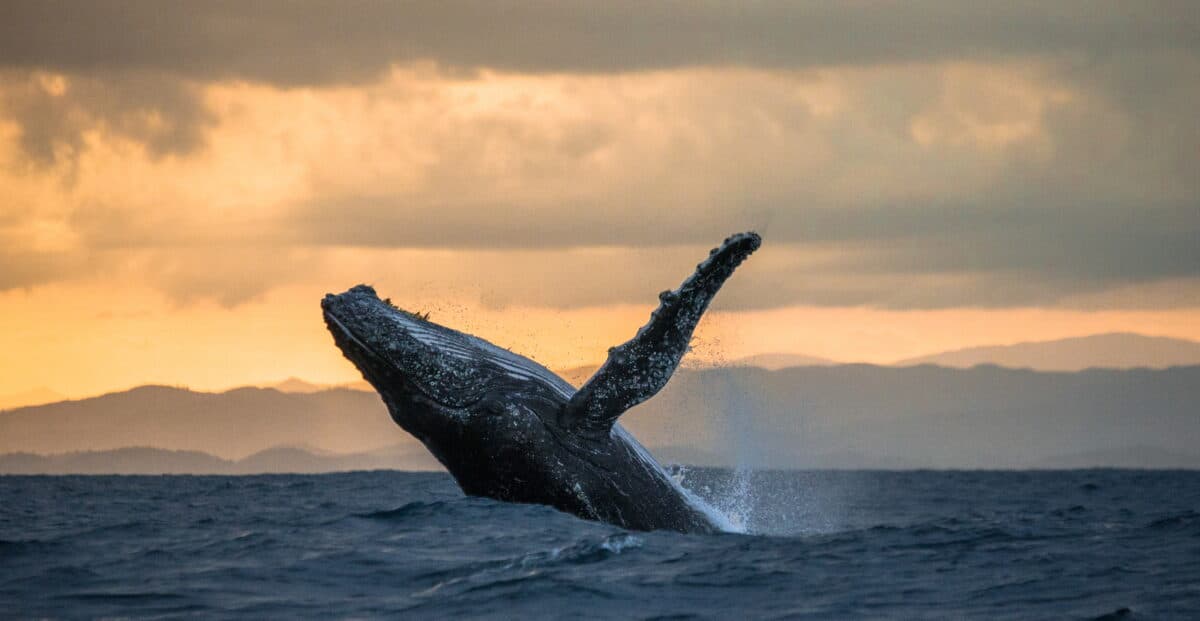
If you are a lover of whales, take a look at our other blogs in our series featuring these gentle giants of the ocean. The complete overview of our whales and the Gray Whales can be two articles you can start with.
We hope these blogs can act as an all inclusive guide to whale watching, for the readers who are itching to pack their binoculars and picnics, and set out along the coasts of the world in sight of whale-themed adventure!
Let us know which whales you have been privileged to see in the wild?
Frequently Asked Questions (FAQs)
Q: Can you dive or swim with fin whales?
A: Fin whales are not predatory and are harmless to humans. However, it is not advised to have close encounters due to their large size. Divers are not permitted to enter the water within 100 feet of a whale.
Q: What are the top 5 places to see fin whales?
A: The top 5 places to view fin whales are: Canada (Quebec & Nova Scotia), North Pacific Sea (California), The Azores, Mediterranean Sea, and North Atlantic Sea (Greenland).
Q: What is the conservation status of fin whales?
A: Fin whales are listed as endangered. They were hunted by commercial whalers for oil, meat, and baleen, and they face threats such as habitat loss, pollution, and climate change.
Q: How long do fin whales live?
A: Fin whales can live for 80 to 90 years on average, although some individuals have been found aged at an estimated 135-140 years.
Q: Where can I donate to support fin whale conservation?
A: You can donate to organizations such as Conservation of Migratory Species of Wild Animals (CMS), Ocean Conservancy, Oceana, WWF Whales, and Whale and Dolphin Conservation.
Q: Are there resident populations of fin whales?
A: Yes, resident populations of fin whales exist in certain areas. For example, the Gulf of California in Mexico and the Mediterranean are home to resident populations of fin whales.
Q: What are the main threats to fin whales?
A: The main threats to fin whales include habitat loss, pollution, climate change, and collisions with ships, which cause a substantial portion of large whale strandings.
Q: How do fin whales communicate?
A: Fin whales produce vocalizations that are the lowest-frequency sounds made by any animal. These sounds are used for communication and may vary depending on location.
Q: What is the size of a fin whale compared to a human?
A: Fin whales can reach lengths of at least 85 feet (26 m) and weights of 80 tons, making them much larger than humans.
- Animals and Wildlife in the Bahamas - October 20, 2024
- Discover the Fascinating World of Long-Neck Dinosaurs - October 20, 2024
- Jurassic World Dominion Dinosaurs - October 20, 2024

